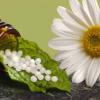CYBERMED LIFE - ORGANIC & NATURAL LIVING
CYBERMED LIFE - ORGANIC & NATURAL LIVING
 Homeopathic Treatment: Homeopathy, or Homeopathic Medicine, is the practice of medicine that embraces a holistic, natural approach to the treatment of the sick. Homeopathy is holistic because it treats the person as a whole, rather than focusing on a diseased part or a labeled sickness. Homeopathy is natural because its remedies are produced from natural sources, whether vegetable, mineral, or animal in nature.
Homeopathic Treatment: Homeopathy, or Homeopathic Medicine, is the practice of medicine that embraces a holistic, natural approach to the treatment of the sick. Homeopathy is holistic because it treats the person as a whole, rather than focusing on a diseased part or a labeled sickness. Homeopathy is natural because its remedies are produced from natural sources, whether vegetable, mineral, or animal in nature.
The word Homeopathy, which comes from the Greek, through Latin into English, literally means “like disease”. This means that the medicine given is like the disease that the person is expressing, in his totality, not like a specific disease category or medical diagnosis.
The guiding principle of Homeopathy is stated as “let likes cure likes,” similia similibus curentur. While the concept of "like curing like" dates back to the Greek Father of Medicine, Hippocrates (460-377 B.C.), it was German physician Dr. C. F. Samuel Hahnemann (1755-1843) who first codified this principle into a system of medicine. Starting with experiments (called “provings”) on himself, Dr. Hahnemann administered medicinal substances to healthy volunteers (called “provers”). Symptoms that developed in the provers while taking a specific substance gave the homeopathic “picture” of, and indications for, that remedy. Over the years, by means of provings, toxicological data, and clinical experience, the homeopathic drug pictures of over 2000 substances have been derived.
In the practice of Homeopathic Medicine, a detailed, comprehensive interview of the patient, called the homeopathic case-taking, is undertaken to reveal the physical, psychological and emotional characteristics and complaints of that individual. The homeopathic practitioner then finds the homeopathic remedy whose materia medica (drug picture) is the most similar to that of the patient’s characteristic totality. That homeopathic prescription (the similimum) is given to the patient to stimulate his/her being to heal: likes cures likes.
The second principle of Homeopathy is that of the minimum dose. Dr. Hahnemann began using medicinal substances known to work in his day, such as Cinchona or Peruvian bark, for relapsing fever, in a homeopathic way. That means that he administered a medicament with a known remedy picture to a sick person who had a similar symptom picture. But, in the beginning, he was using crude substances, for example, full strength herbs. He observed that, while the patients got well, they also had side effects. To minimize those side effects, through further experimentation, he came upon the idea of potentization. Homeopathic medicines are prepared through a series of dilutions, at each step of which there is a vigorous agitation of the solution called succussion, until there is no detectible chemical substance left. As paradoxical as it may seem, the higher the dilution, when prepared in this dynamized way, the more potent the homeopathic remedy. Thereby is achieved the minimum dose which, none the less, has the maximum therapeutic effect with the fewest side effects. In fact, Homeopathy has an enviable centuries old history of safety in use of its potentized oral medicines among patients of all ages, including babies, children, pregnant and nursing women, and senior citizens.
The third principle of Homeopathy is the single remedy. Most homeopathic practitioners prescribe one remedy at a time. The homeopathic remedy has been proved by itself, producing its own unique drug picture. That remedy is matched (prescribed) to the sick person having a similar picture. The results are observed, uncluttered by the confusion of effects that might be produced if more than one medicine were given at the same time.
There are two main categories of treatment in Homeopathic Medicine; i.e., acute and chronic. Acute treatment is for illness of recent onset; it may be self-limited (for example, the common cold), or it may progress if not treated (for example, pneumonia). In such an illness the body might overcome the illness, a cold for example, sooner or later, but the appropriate medicine gently stimulates the body to recover more quickly and efficiently.
Chronic or constitutional treatment is the other main category of treatment. A chronic disease is long standing or a recurrent health problem. The length of treatment and the challenge to achieve positive results is affected by many factors, including the nature of the problem, the early health history, the family medical history, the previous treatment, and the person’s inherent constitutional strength. The goal is to help the person to return to a state of well-being through individualized homeopathic treatment.
Officially recognized under the 1938 Food, Drug, and Cosmetic Act, the 1965 Medicare Act, and the 1987 FDA Compliance Policy Guidelines, these safe, gentle but deep-acting medicines can be used to treat persons experiencing many kinds of medical conditions. It would be wise, nonetheless, to discuss with the prospective homeopathic practitioner his/her experience with one’s particular complaint or problem.